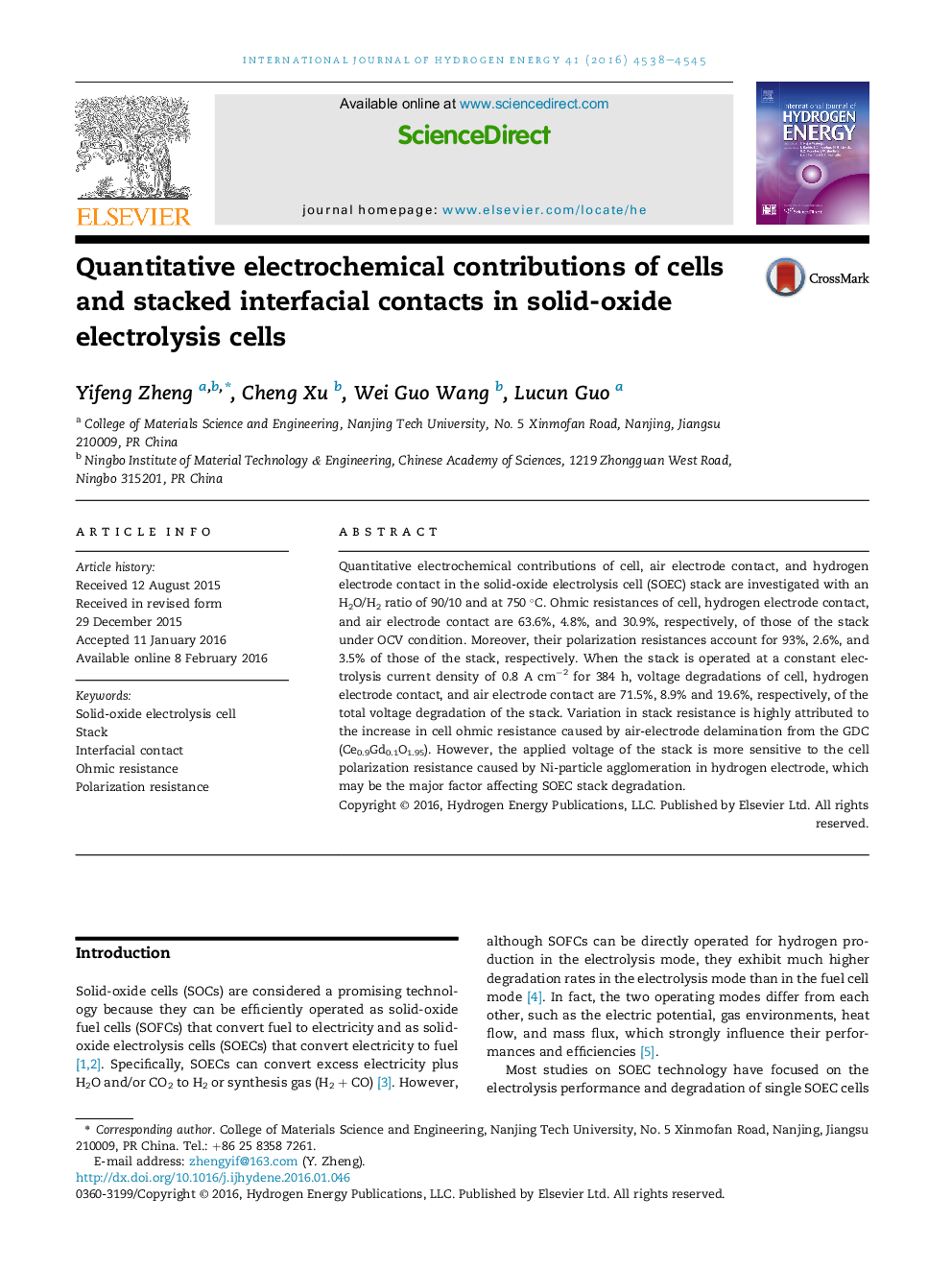| Article ID | Journal | Published Year | Pages | File Type |
|---|---|---|---|---|
| 1271142 | International Journal of Hydrogen Energy | 2016 | 8 Pages |
•Electrochemical contributions of components in SOEC stack are investigated.•Variation in stack resistance is highly attributed to the increase in cell Rs.•The applied voltage of the stack is more sensitive to the cell Rp.
Quantitative electrochemical contributions of cell, air electrode contact, and hydrogen electrode contact in the solid-oxide electrolysis cell (SOEC) stack are investigated with an H2O/H2 ratio of 90/10 and at 750 °C. Ohmic resistances of cell, hydrogen electrode contact, and air electrode contact are 63.6%, 4.8%, and 30.9%, respectively, of those of the stack under OCV condition. Moreover, their polarization resistances account for 93%, 2.6%, and 3.5% of those of the stack, respectively. When the stack is operated at a constant electrolysis current density of 0.8 A cm−2 for 384 h, voltage degradations of cell, hydrogen electrode contact, and air electrode contact are 71.5%, 8.9% and 19.6%, respectively, of the total voltage degradation of the stack. Variation in stack resistance is highly attributed to the increase in cell ohmic resistance caused by air-electrode delamination from the GDC (Ce0.9Gd0.1O1.95). However, the applied voltage of the stack is more sensitive to the cell polarization resistance caused by Ni-particle agglomeration in hydrogen electrode, which may be the major factor affecting SOEC stack degradation.
